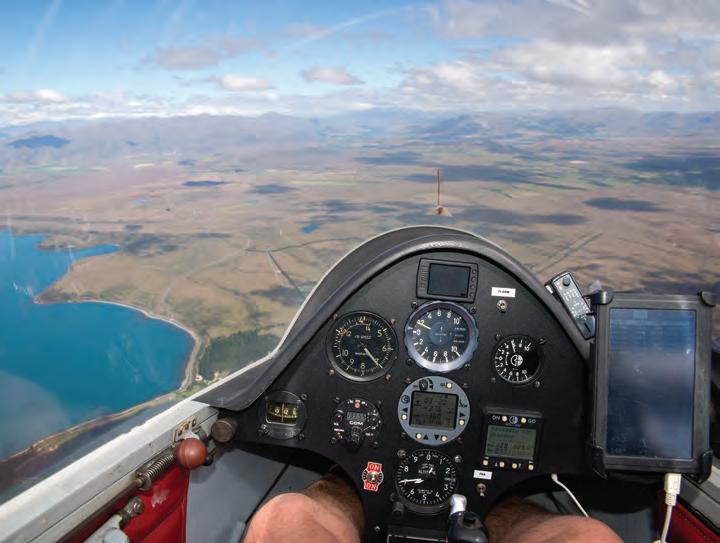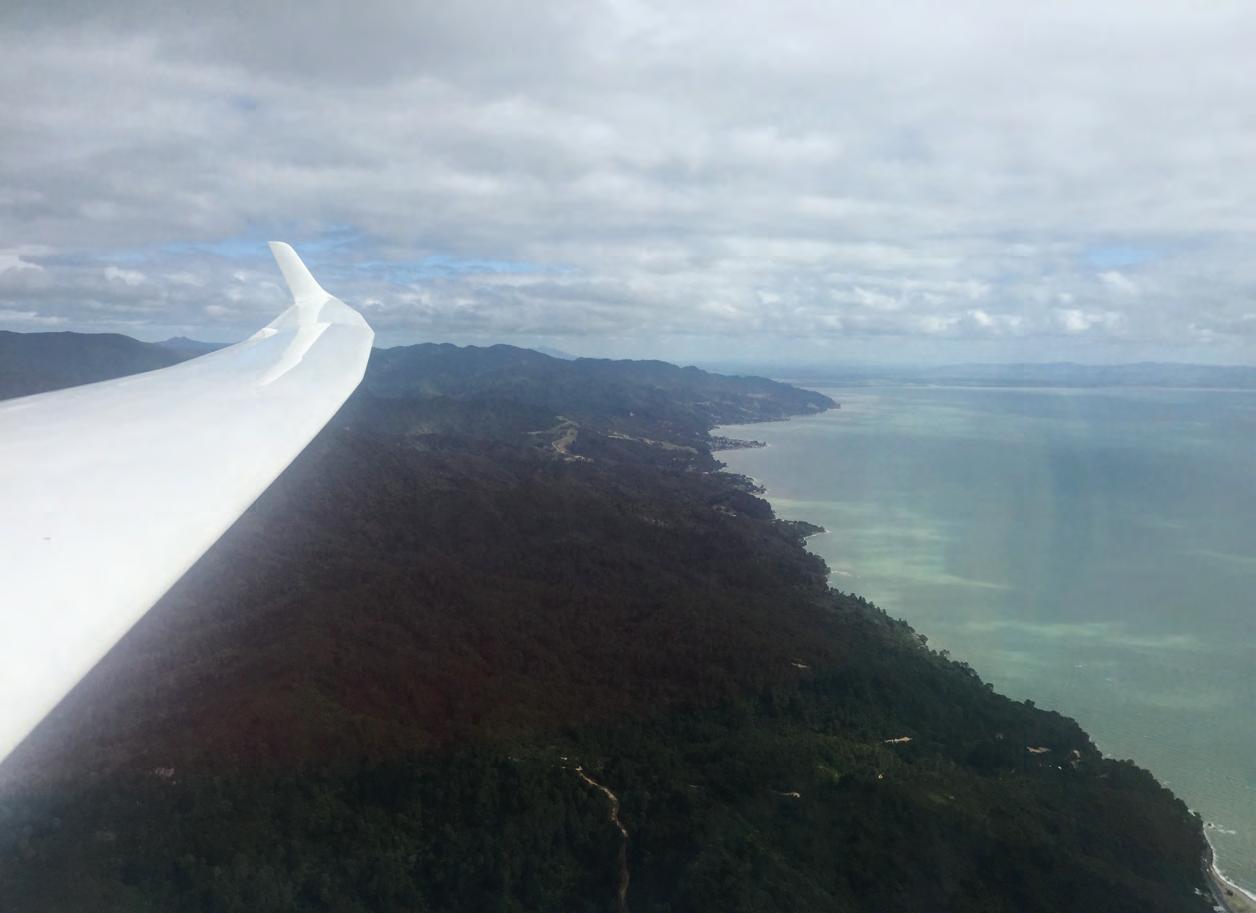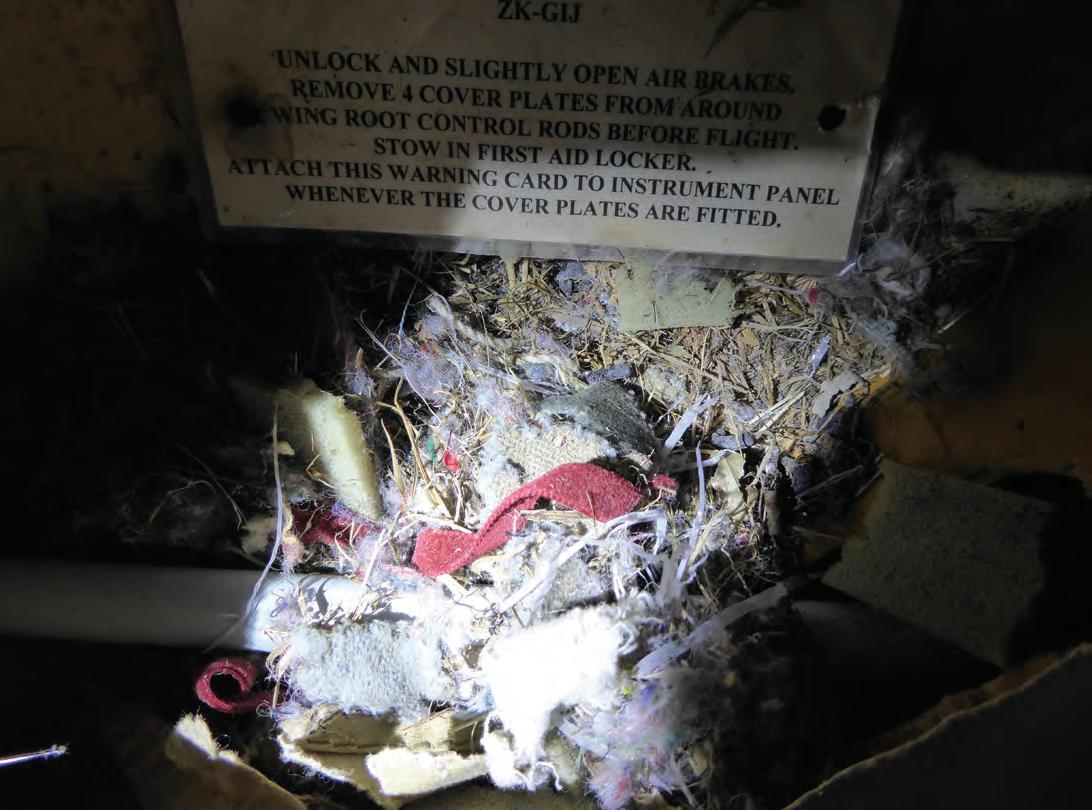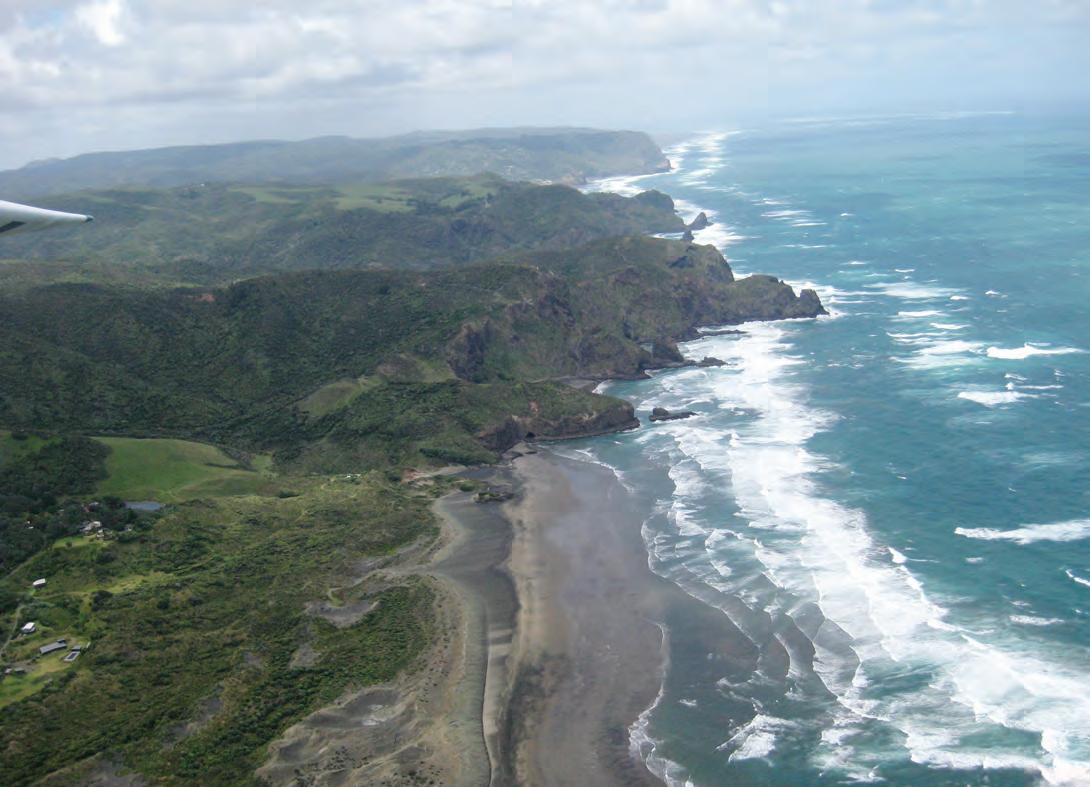12 minute read
Steve goes to the Worlds in Benalla
from SoaringNZ Issue 48
by mccawmedia
Next Article
BY STEVE WALLACE
Benalla in Victoria, Australia was the location for the 34th FAI World Gliding Championships being contested in the 15m, 18m and Open classes. I was lucky enough to make the team. I was very happy to be part of what was to be a great fun gliding event. Being close to New Zealand made this even better as the logistics are less onerous and the flying is more familiar. Like most of the NZ pilots, I had some Aussie flying already under my belt. NZ had a full team of six pilots, plus a team Captain, met man/talking head, crew and many others. At times, there were up to 30+ kiwis hanging out at the team base.
I arrived in Benalla on Jan 1st and my rented Ventus 2 arrived early the next day in time for me to rig, register and complete the technical inspection formalities. I was up and flying by the beginning of the unofficial practice period but the glider still had a whole range of issues that took me a full five days to get sorted. But this is why there is a practice period, as it gives the organisers and pilots a chance to get their acts together. The weather during the practice period was variable with tasks flown ranging from 150 km at 73 kph to 501 km at 130 kph. This was a reasonable indication of the variable weather to be encountered during the contest period itself. I think most pilots would have agreed the contest weather was not great, especially compared to the potential that Australia can turn on when the weather is good.
The Opening Ceremony was a pleasant, colourful but hot affair and it signalled the last of the good weather. The next day it rained and nobody flew and the day after that, the very high humidity meant the clouds were still under 2,000 feet AGL late in the day. The day was cancelled for the 15m and 18m. The Open Class flew a 2hr AAT with winning speeds up around 130 kph. So it wasn't until the third day, that 15m and 18m got to have a day one. The day started late and low and we went to Task C on the grid, a short 206 km racing task. The conditions were low and blue which was to become a familiar weather set for the rest of the comp. This meant the use of tactical gaggle flying became an essential and I had to learn fast.
Most Kiwis don't get to regularly participate in larger competitions, so flying in large gaggles is something quite foreign. It is also quite thrilling. The gaggle is like a peloton of bike riders, rolling through the sky with every glider contributing to the finding of the best lines of energy in the cruise and then centring the best lift. Towards the end of the cruise when everybody senses a climb is needed, gliders spread out and like schools of fish, groups of gliders dart left and right turning with each other as they search the rising air and look to centre the next climb. Then somebody has it. A glider turns tightly and is going up faster than any others. This glider is quickly joined by two, three then four others. The climb is confirmed by all watching as being better than anything else anybody is working in the area and then all at once, everybody moves to join the climb. Gliders stream into the thermal from further back in the cruise and in no time at all, the thermal is full and marked from top to bottom. Sometimes the sky is quite bubbly and the higher gliders climb quicker and break away, while those at the bottom can find themselves in a much poorer climb, sometimes half that of those only 500 feet above. In this scenario, bottom gliders can very quickly find themselves left behind. It doesn't work the other way around either, because the higher gliders don't stop in poor climbs. Chasing the gaggle from low down can be fruitless and the only way to catch up is to independently find a better climb than the next one or two climbs, the now higher and further away, main gaggle finds. When alone and without other gliders, this is very hard to do. This was the environment I found myself in and it seemed some days I was in tune with the sky and the gaggles and some days I wasn't.
On the first day, I flew with the main gaggle all day and towards the end of the short course I found myself in a reasonable position near the front of the pack. Unfortunately, my final glide was a bit undercooked and I had to slow right down to enable me to squeak home for a respectable 14th out of 37 for
Kiwi pilots and crew fly the flag on opening day
the day. The top, and vastly experienced pilots, had started just a bit later than the main gaggle and were able to work their way through the field to be with the leaders as they glided home, ensuring good speeds and victory for them for the day.
The next day (Day two in 15m), I missed starting with the main group when lured to the wrong end of the start line by groups of 18m gliders. I was one of the last three to start. With two pilots from the USA, our mini gaggle did okay but we were not able to catch any of the main gaggles and I ended up 26th out of 37 for the day. On this day, the pre-start gaggles were like being in a knife fight in a phone box, with lots of unnecessarily aggressive flying. Tensions were high by the end of the day with much reporting of the bad flying. There was a mid-air clash of wings which saw one pilot landing out and another returning to Benalla. At briefing the next day, all 15m pilots were asked to stay back for a ‘telling off’ by the contest organisers and for a frank swapping of opinions between competing pilots, where everybody agreed to fly nicer.
We then had a day off due to weather and unfortunately, by flying day three, everybody seemed to have forgotten what they had agreed to a day earlier and the pre-start gaggles were back to their worst. I left early with a small group and was having a good run. I was well in tune with the sky and going into the last leg I still had a 30 km jump on the main gaggle. With 150 km left to run, my little group wasn't going to get caught. Alan Belworthy, my team mate in the 15m, was with the main bunch. He suddenly piped up on the Kiwi team frequency and said he had just seen a mid-air. The tone of his voice conveyed that it was serious. After what seemed like a long pause the sombre call of, ‘no chutes,’ came. Another long pause and a more excited call of, ‘two chutes.’ This was a relieving call for all those listening. Very shortly afterwards came the advice he had seen the two gliders hit the ground and the chutes land.
Attempts were made to raise Kiwi Base on the radio but everyone was out of range, so Brett phoned in. Unfortunately these days, information travels fast so most teams back at

base were aware of the mid-air long before they knew who was involved and what the outcome was, thus a very worrying time for teams back at the airfield.
As other pilots had landed to render assistance, quality information was getting phoned back to the organisers and a rescue plan quickly swung into action. Both pilots were airlifted to Canberra Hospital with ‘moderate’ injuries. Within what seemed like less than 10 minutes from the incident occurring, the Contest Director came on the radio and advised the day had been cancelled for 15m.
The next day was again a no-fly day due to weather. Eight days in and we were only on our third scoring day for the 15m. This day was set as a five hour AAT to try and get our class to start and reduce the amount of time for pre-start gaggle games. Everybody was now flying super nice. My day went well until coming into the last turn point when I suddenly found myself on the bottom of one of those bubbles and the main gaggle just climbed up and flew away. I tried to catch up but it only made my situation worse. I had been dropped and had to make my way slowly home by myself in the blue, in a dying sky. It wasn’t all bad though, as some big names had gambled and started late and they got caught out by the dying sky at the end of the day, resulting in land outs. So again, I came 26th out of what was now 35 pilots.
The fourth scoring day was a good one for me. I left early with a great group of pilots and we had a great run. Slow initially over the irrigated area to the west, my speed dropped to 85 kph but once clear of this area the thermals went from 4,500 to 9,000 feet and my speed rose to a respectable 131 kph for the day making me 9th. My first top ten finish at a Worlds. I was pleased.
The next day, again, was a non-event due to weather. The fifth scoring day was a 370 km racing task and once again all went well until just short of the last turn point, where the gaggle stretched out in some uncertain air. I followed a line towards higher gliders along a river. The air was bad and I


arrived low under a group of climbing gliders. The higher climb was better and I fell behind. I rounded the last turn point low and had to drop water to get back up again in a weak climb. By this time the main gaggle had flowed through and I was left behind to make my way slowly home in the weakening blue thermals without the assistance of other gliders. Once again, I was amazed by just how quickly you can be dropped from the gaggle. A small run of bad air and a brief period of isolation is all it takes. Those ahead get a bubble and climb away, those behind see your trouble and avoid it. All of a sudden, you’re low and alone. While you may get home, it's all over in the speed department. The gaggle is just so much faster than the individual in blue and weak conditions. 32nd out of the 35 gliders. Not a good day.
The next day, after very heavy overnight rain (thunder and lightning), the field was too wet for launching and the organisers attempted to launch the 15m class only, from the sealed vector. The 30 knot cross wind proved too much for safe launching. After only 7 very hairy take-offs (one of which was me) the contest director cancelled the day via radio while I was on aero-tow.
So, on the 13th possible competition flying day we launched for our sixth and last scoring day. Again, the day barely made the grade with thermals for the first hour or two after launch barely going above 2,000 feet AGL. To make matters worse, our start gate had been positioned at the head of the southern valley, out of which cold, southerly air was pouring and filling the area immediately around Benalla. Just getting to the start line which was 16 km away was a hour-long struggle. This struggle had the nice effect of breaking up the gaggle, as small groups of 3 or 4 scattered around the sky. After really struggling across the first 30 km or so of low land, mostly by myself,

things picked up as I got away from the cold air and into the hills. In the hills, I got high (5,000 feet AGL) and from here my flight was good. I picked off some gliders ahead and was able to catch Alan who had got a good jump on me after starting later. I was soon with a good group of four before getting on top and pulling away. I was nicely in tune with sky and catching good strong thermals just when needed. It was an AAT task and I was able to run deep across the last circle and run my time delta down to zero before turning for home. It was a 3.5 hour AAT and the day was starting to weaken but luckily, I was able to join with the 18m stream on their way home and fly marked thermals all the way to final glide. I was pretty confident I had had a good day, as I was the first 15m glider home and I knew all the rest would be finding it increasingly slow going as the day was rapidly decaying. In the end, I was 5th for the day, my new, best ever day placing in a worlds. Top three was tantalisingly close! It was great to finish on a high and in the top half overall with my final placing 18th out of the 37 starters.
The Worlds is certainly a great event and while most pilots seem to have a love hate relationship with tactical gaggle flying, it is a very special and thrilling type of flying that is yet another aspect of flight to master in our great sport. Despite the weather, I really enjoyed this Worlds as I felt I got a handle on being able to foot it with the best in the world. I think with persistence I could work my way into the top ten but time, age and money may have other ideas.
I’m just thrilled to have participated and would like to thank all my supporters, both those that came over to help out and those who supported me with either advice, kind words, money, equipment and even offers of gliders!











